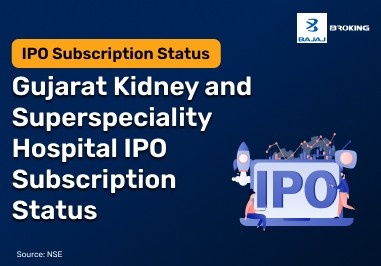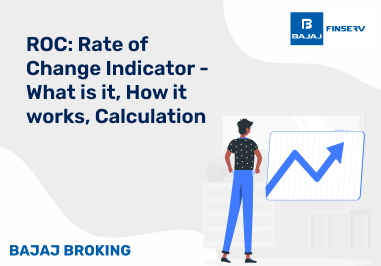Opening and closing hours of the market often experience the highest levels of price movement and trading activity. These periods reflect new overnight developments, economic data, or institutional rebalancing. For individual traders like you, this volatility can offer opportunities but also bring risk if not approached with caution. Understanding how to manage trades at market open and close can improve your execution and minimise exposure to unexpected reversals. Whether you are a day trader, scalper, or swing trader, learning the behaviour of these volatile windows is essential for better decision-making and risk control during high-impact trading sessions.
Strategies for Trading Market Open
The first 30 minutes after the market opens are marked by heavy order flow, aggressive price changes, and rapid shifts in sentiment. This makes the opening session a sensitive time for executing trades. You must act with discipline and observe market structure before placing orders.
Below are some structured strategies for trading the market open effectively:
1. Pre-market level analysis
Review pre-market highs, lows, and volume trends.
This helps identify key zones that may act as support or resistance during the opening range. Aligning trades with these levels avoids blind entries.
2. Wait for the opening range to form
Let the first 15–20 minutes shape the market direction.
Avoid impulsive trades by waiting for range confirmation. Once a breakout or breakdown is clear, you can plan entries more safely.
3. Use VWAP as a directional filter
Confirm trend alignment using VWAP position.
If price is consistently above VWAP after the open, it signals potential buying pressure. Price below VWAP may indicate weakness.
4. Trade with smaller position size
Limit your exposure during uncertain moments.
Use half or fractional position sizes in the opening minutes until the market settles, then scale in once a trend develops.
5. Set wider stop-loss initially
Allow room for initial volatility.
Tight stops in the opening range may trigger unnecessarily. Use calculated risk levels beyond price noise to avoid early exits.
Strategies for Trading Market Close
The final 30–45 minutes of market hours often witness increased institutional activity, profit booking, and end-of-day order executions. Understanding this period’s rhythm can help you adjust your risk levels, time entries for next-day positions, or close intraday trades effectively.
Use these strategies for trading market close with clarity:
1. Avoid initiating fresh intraday trades
Closing volatility can be unpredictable. If you are an intraday trader, avoid new positions unless you see a high-confidence breakout confirmed by volume and trend continuation.
2. Use closing VWAP to assess trade strength
VWAP near price indicates balanced movement.
When price closes well above or below VWAP, it reflects trend strength and may guide whether to carry positions overnight.
3. Observe institutional order flow
Track sudden spikes in volume after 3:00 PM.
These are often due to fund rebalancing or index adjustments. Reacting without understanding the context may lead to poorly timed trades.
4. Exit partial or full positions before close
Reduce risk exposure overnight.
If the next day brings news events or data, reducing position size before the close helps manage gap-up or gap-down risk.
5. Avoid emotional decisions
Do not chase last-minute price moves.
If a trade did not go your way earlier, do not try to “make up” for it in the last 10 minutes. Stick to your plan.
Stay Safe from False Breakouts in the Market
False breakouts occur when the price briefly breaches key levels but fails to hold, often trapping traders in poor positions. They are more frequent during volatile sessions—particularly during opening and closing hours. These fake moves can result in quick losses, especially if your stop-loss placement or entry timing lacks discipline.
To reduce the risk of getting caught in false breakouts, consider these techniques:
1. Wait for candle confirmation
Avoid acting on the first breakout tick.
Allow the breakout candle to close above or below the key level. Enter on confirmation, not anticipation, to reduce failed entries.
2. Check breakout volume
Validate breakouts with volume expansion.
Low volume breakouts tend to reverse. Confirm whether breakout is supported by a noticeable rise in traded volume compared to the last few candles.
3. Use higher timeframes to confirm breakout zones
Validate on 15-min or hourly charts.
Even if you trade on 5-minute charts, larger timeframes help distinguish noise from genuine trend shifts, reducing chances of fake signals.
4. Avoid trading near major news announcements
News often triggers unpredictable volatility.
Scheduled economic events or corporate announcements around the open or close can distort price movement, leading to unreliable breakout behaviour.
5. Combine VWAP with support/resistance
Layer indicators for stronger context.
A breakout near a VWAP and previous resistance level, supported by strong volume, has more weight than one based on price action alone.
6. Place stop-loss beyond re-entry point
Do not place stops too close.
Allow the price space to confirm whether it holds or rejects the breakout level. Too-tight stops can cause premature exits even when the direction is correct.
7. Avoid breakouts during sideways market conditions
Flat markets lack follow-through.
If price consolidates in a tight range for hours, breakouts are more likely to fail. Trade only if a broader trend supports your direction.
8. Observe retests
Retest behaviour confirms breakout strength.
Wait for price to return and test the breakout level. If it holds, this validates your entry and filters out many false breakout setups.
Conclusion
Trading the opening and closing market volatility requires careful observation, patience, and structured planning. These high-activity periods can offer unique trading opportunities, but they also carry higher risk from sudden price swings and false breakouts. Your approach should include technical confirmation, controlled risk exposure, and situational awareness of market context. Whether you are trading the opening breakout or closing a position for the day, ensure your strategy accounts for volume dynamics, emotional discipline, and exit clarity. With consistent execution and risk management, navigating market open and close can be part of your daily routine—not a source of stress.














